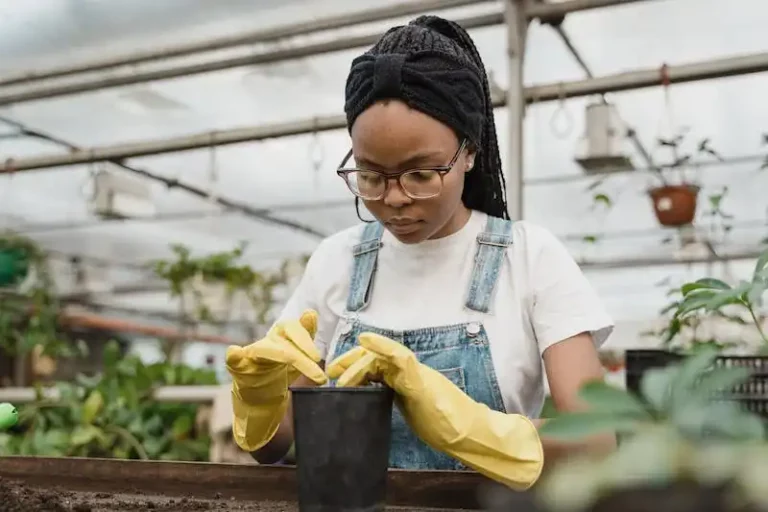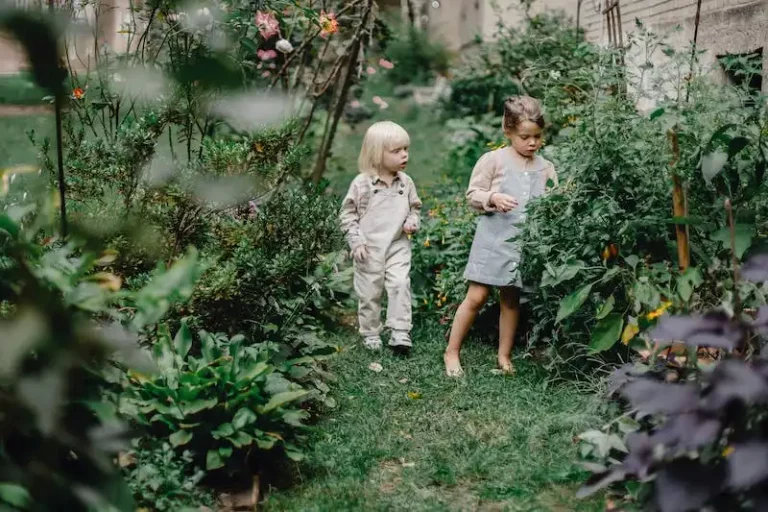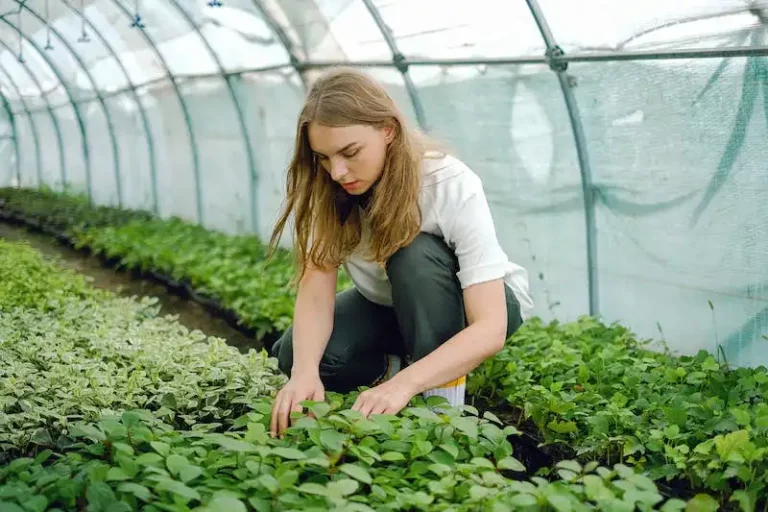Bougainvillea is a beautiful and fast-growing plant that is able to thrive in several different types of climates. Whether you live in a sunny area or one that experiences colder winters, bougainvillea can be successfully planted and grown. In this article, we will provide you with several tips and solutions on how to grow bougainvillea and keep it blooming with beautiful colors all year round.
One of the most important factors to consider when growing bougainvillea is sunlight. This plant loves sunlight and needs at least 6 hours of direct sunlight daily to thrive. Make sure to choose a location for your bougainvillea where it will receive plenty of sunlight throughout the day. If you live in an area where frost occurs during the winter, it’s best to plant your bougainvillea near a wall or garage, as these structures can provide some protection from the cold.
Another tip for growing bougainvillea is proper training and pruning. Bougainvillea is a vining plant, and if left to grow on its own, it can easily become unruly and take over. By hand pinching your bougainvillea, you will be able to control its growth and promote a more balanced and compact shape. Additionally, regular pruning can help to keep your bougainvillea looking its best and encourage more blooming.
Bougainvillea is a hardy plant, but it does require some care and attention. It needs well-drained soil and should be watered regularly, especially during dry periods. However, be careful not to overwater your bougainvillea, as it can be prone to root rot. Using a good quality fertilizer, especially one with a high potassium content, can help to promote strong growth and vibrant blooms.
In areas with high humidity, bougainvillea may encounter problems with pests such as scale. If you notice any signs of pest infestation, there are solutions available to help control them. You can use insecticidal soaps or oils, or even introduce beneficial insects such as ladybugs to your garden to help keep pests at bay.
Finally, it’s important to note that there are several different types of bougainvillea available, including smaller or dwarf varieties and even those that can be trained as bonsai. Depending on your preference and the space you have available, you can choose the type of bougainvillea that best suits your needs and style.
With these tips and guidelines, you’ll be well-equipped to grow and enjoy the beautiful colors of bougainvillea. Whether you’re planting it in your garden, on a trellis, or in a pot on your balcony, bougainvillea is sure to add a touch of beauty and elegance to any outdoor space.
Bougainvillea
Bougainvillea is a beautiful and vibrant plant that is able to grow in a wide range of climates and environments. It is known for its bright and showy flowers, which are actually a type of bract. Bougainvillea can be grown as a climber, trained on trellises or fences, or pruned into a shrub-like form.
In California, bougainvillea is a popular plant due to its ability to stay healthy and bloom for most of the year. It is also able to withstand the weak California sun and is not easily affected by temperature fluctuations. Bougainvillea is a versatile plant that can be grown in containers, planted in the ground, or used as a hedge or vine to cover walls and hillsides.
The key to successfully growing bougainvillea is proper care, including watering and fertilizer solutions. These plants do not like to be overwatered, so it is important to water them only when the top few inches of soil are dry. They also require well-draining soil and should not be planted in areas that have poor drainage.
When it comes to fertilizer, bougainvillea plants need to be fed regularly during the growing season. A balanced fertilizer with a ratio of 10-10-10 or 14-14-14 can be used. It is important to follow the instructions on the fertilizer package, as over-fertilizing can lead to weak growth and fewer flowers.
Bougainvillea is a fast-growing plant, so regular pruning is necessary to keep it in check. This also helps to promote more flowering. Pruning should be done after the plants have finished blooming, and any dead or damaged branches should be removed. Bougainvillea can be pruned by hand or using hedge trimmers, but it is important to wear gloves as the plant has thorns.
Bougainvillea is a true sun lover and requires full sun exposure to bloom to its full potential. It prefers temperatures between 80-85°F (27-29°C) during the day and 60-70°F (15-21°C) at night. If the temperature drops below 40°F (4°C), the plant may show signs of stress and its growth may slow down.
One of the factors that make bougainvillea so attractive is the wide range of colors it comes in. From deep reds and purples to vibrant pinks and oranges, there is a bougainvillea to suit every gardener’s taste. The colors are actually produced by the bracts and not by the actual flowers, making bougainvillea a unique and eye-catching plant.
Overall, bougainvillea is a beautiful plant that can add a touch of tropical beauty to any garden or landscape. With the right care and attention, these plants will flourish and reward you with abundant and colorful blooms year-round.
Learn how to plant, grow, and care for Bougainvilleas
Bougainvilleas are colorful and showy plants that can add a vibrant touch to any garden or landscape. These thornless plants are native to areas with sunny exposure, such as hillsides and valleys. The branches of Bougainvillea are easily trained to grow in a variety of shapes, making them a popular choice for landscaping.
When planting Bougainvilleas, it is important to choose a sunny location with well-drained soil. These plants need at least 6-8 hours of direct sunlight each day to thrive. If you are located in colder zones, consider growing them in containers, as they won’t tolerate frost. Make sure to allow enough space for the plant to spread since Bougainvilleas can grow up to 20 feet in height and spread.
During the growing season, Bougainvilleas require frequent watering. However, be cautious not to overwater them, as this can lead to root rot. The soil should be allowed to dry between waterings. During dormancy periods or colder months, reduce the amount of water you give to the plant.
Fertilizing Bougainvilleas is essential for promoting healthy growth and abundant blooms. Use a balanced fertilizer following the instructions provided. Avoid over-fertilizing, as it can result in excessive foliage growth at the expense of flowering.
Bougainvilleas are generally disease-resistant and relatively low-maintenance. However, there are some common problems you may encounter, such as pests or fungal diseases. Regularly check the plant for any signs of pest infestation or disease and take appropriate action if needed. You can ask a gardening expert for advice on how to deal with these issues.
Bougainvilleas are known for their colorful bracts, which are modified leaves that surround the small, inconspicuous flowers. These bracts come in various shades of pink, purple, red, and orange, creating a stunning display. The flowers will bloom more if the plant is stressed, so don’t be afraid to allow the Bougainvillea to dry out a bit between watering.
Overall, Bougainvilleas are easy to grow and care for, as long as they’re provided with plenty of sunlight, well-drained soil, and appropriate watering. With their wide range of colors and full foliage, Bougainvilleas are one of the prettiest plants to have in your garden.
| Plant Type | Vining plant |
|---|---|
| Hardiness Zones | Generally zones 9-11; some varieties can tolerate colder zones |
| Height/Spread | Up to 20 feet in height and spread |
| Exposure | Sunny |
If you’re interested in growing Bougainvilleas, read on to discover some useful tips and information about these beautiful plants.
When selecting a Bougainvillea plant, opt for a healthy one with vibrant foliage. Look for varieties that are known to bloom well in your region. You can also ask the nursery or gardening expert for recommendations.
Before planting, prepare the soil by incorporating organic matter and ensuring proper drainage. This will help the plant establish and grow successfully.
During the first year of growth, you may need to prune the Bougainvillea to shape it and control its size. Pruning after blooming season will encourage new growth and more flowers.
If you live in an area with colder winters, consider growing Bougainvilleas in containers that can be moved indoors during the colder months. Make sure to place the plant in a sunny spot and keep it well-watered.
By following these tips and guidelines, you can enjoy the vibrant and beautiful blooms of Bougainvilleas in your garden or landscape.
Sign up for daily gardening advice and tips
Are you looking for tips and advice to help your garden bloom? Sign up to receive daily gardening advice and tips to transform your garden into a beautiful haven.
Our expert gardeners will provide you with valuable advice on how to grow bougainvillea, a stunning flowering plant that adds vibrant colors to your garden. Bougainvillea is a popular choice due to its beautiful orange, purple, and gold bracts that surround its small, inconspicuous flowers. It is also known for its thornless and vining growth habit, making it easier to control and train.
Whether you are a beginner or an experienced gardener, our tips will help you successfully grow and maintain bougainvillea. Here are some key points to keep in mind:
| Watering and soil: | Bougainvillea prefers well-drained soil and requires regular watering, especially during the hot summer months. Be sure to allow the soil to dry out slightly between waterings to prevent overwatering. |
| Planting: | When planting bougainvillea, choose a sunny spot in your garden with plenty of direct sunlight. It is also important to provide some support, as bougainvillea loves to climb and spread. |
| Pruning: | Prune bougainvillea regularly to control its growth and encourage more flowers. Pinching and removing spent blooms will promote new growth and keep your plant looking tidy. |
| Fertilizer: | Use a balanced fertilizer to provide bougainvillea with the nutrients it needs for optimal growth and blooming. Fertilize every 4-6 weeks during the growing season for best results. |
| Colder climates: | If you live in an area with colder winter temperatures, bougainvillea may need some protection from frost. Consider bringing your potted bougainvillea indoors or covering the plant with a frost cloth during colder months. |
By following these tips, you will be able to enjoy the vibrant and colorful blooms of bougainvillea in your garden for years to come. Don’t miss out on this stunning plant that will truly enhance the beauty of your outdoor space.
If you have any more questions about growing bougainvilleas or other gardening topics, feel free to ask our expert gardeners. They are always here to help and provide you with the advice you need to succeed in your gardening journey.
Sign up today and join our gardening community to receive daily advice and tips straight to your inbox. Let us guide you on your gardening path and create a garden that will be the envy of all your neighbors.



